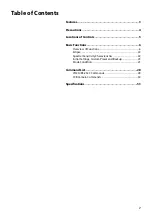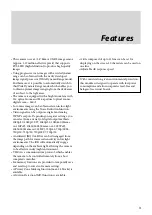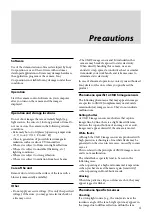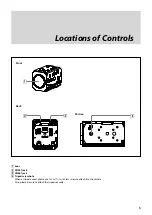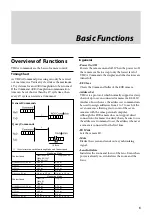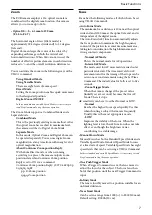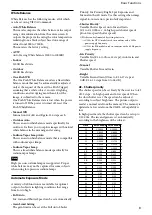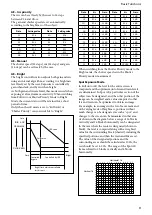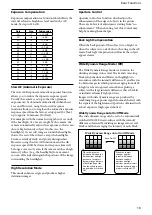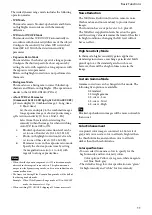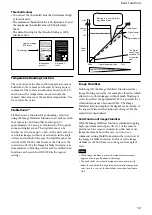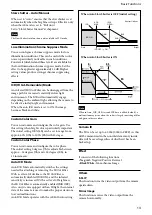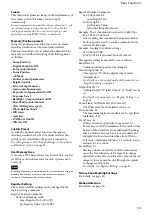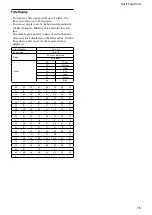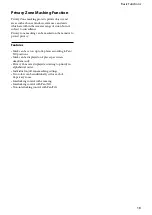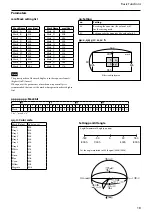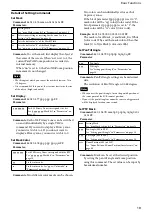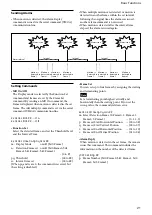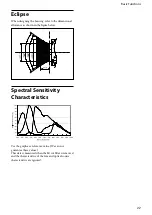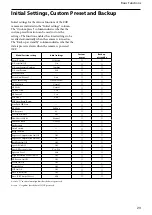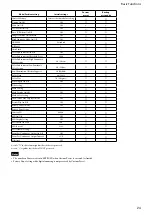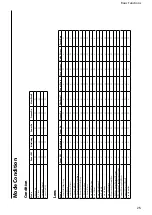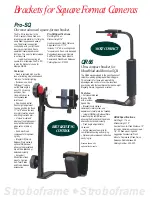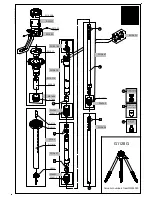
10
Basic Functions
FCB-EH6300(GB) A-E23-100-13(1)
Exposure Compensation
Exposure compensation is a function which offsets the
internal reference brightness level used in the AE
mode, by steps of 1.5 dB.
Data
Step
Setting value
0E
+7
+10.5 dB
0D
+6
+9 dB
0C
+5
+7.5 dB
0B
+4
+6 dB
0A
+3
+4.5 dB
09
+2
+3 dB
08
+1
+1.5 dB
07
0
0 dB
06
−1
−1.5 dB
05
−2
−3 dB
04
−3
−4.5 dB
03
−4
−6 dB
02
−5
−7.5 dB
01
−6
−9 dB
00
−7
−10.5 dB
Slow AE (Automatic Exposure)
The slow AE Response (automatic exposure) function
allows you to reduce the exposure response speed.
Usually the camera is set up so that the optimum
exposure can be obtained automatically within about
1 second. However, using the slow AE response
function allows you to lengthen the automatic exposure
response speed from the factory setup speed (01 (hex)
up to approx. 10 minutes (30 (hex)).
For example, with the normal setting (about 1 second),
if the headlights of a car are caught by the camera, the
camera automatically adjusts the exposure so that it can
shoot a high-intensity subject (in this case, the
headlights). As a result, images around the headlights,
that is, the rest of the subject, except the headlights,
becomes relatively dark, and poorly distinguished.
However, using the slow AE function means the AE
response speed will be slower, and response time will
be longer. As a result, even if the camera catches a high-
intensity subject (e.g., the headlights) for a moment,
you can still easily distinguish the portions of the image
surrounding the headlights.
High Resolution Mode
This mode enhances edges and produces higher
definition images.
Aperture Control
Aperture control is a function which adjusts the
enhancement of the edges of objects in the picture.
There are 16 levels of adjustment, starting from “no
enhancement.” When shooting text, this control may
help by making them sharper.
Back Light Compensation
When the background of the subject is too bright, or
when the subject is too dark due to shooting in the AE
mode, back light compensation will make the subject
appear clearer.
Wide Dynamic Range Mode (WD)
The Wide Dynamic Range mode is a function for
dividing an image into several blocks and correcting
blocked-up shadows and blown-out highlights in
accordance with the intensity difference. It enables you
to obtain images in which portions ranging from dark
to light can be recognized, even when capturing a
subject with a large intensity difference that is backlit
or includes extremely light portions.
Images with wide dynamic range are produced by
combining long-exposure signals (normal shutter) with
the signals of the high-intensity portions obtained with
a short exposure (high-speed shutter).
Wide Dynamic Range Auto On/Off Mode
The wide dynamic range can be set to be automatically
switched ON/OFF in accordance with the intensity
difference obtained by dividing an image into several
blocks and then averaging the intensity of each block.
Wide Dynamic Range Auto On/Off Mode
When the intensity
difference between the
dark portions and light
portions of a subject
becomes large because
of back lighting or the
like, the wide dynamic
range mode is switched
ON.
Auto On/Off
When the subject
changes and the
intensity difference
between the dark
portions and light
portions becomes small,
the wide dynamic range
mode is switched OFF.
Содержание FCBEH6500
Страница 1: ... 2012 Sony Corporation Color Camera Module FCB EH6500 A EEP 100 11 1 Technical Manual ...
Страница 57: ...57 Specifications DIGITAL Image Output Y Cb Cr 4 2 2 FORMAT Color coding complies with BT709 ...
Страница 58: ...58 Specifications Timing Chart 1080i 60 Output Timing Chart CLK VD HD Data 1080i 50 Output Timing Chart ...
Страница 59: ...59 Specifications 1080p 30 Output Timing Chart 1080p 25 Output Timing Chart ...
Страница 60: ...60 Specifications 720p 60 Output Timing Chart 720p 50 Output Timing Chart ...
Страница 61: ...61 Specifications 720p 30 Output Timing Chart 720p 25 Output Timing Chart ...


